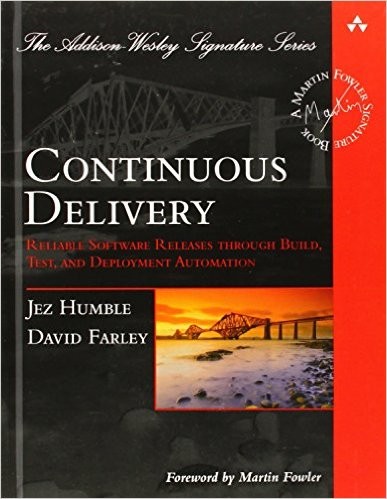White Paper: Continuous Delivery: Reliable Software Releases through Build, Test, and Deployment Automation
Introduction
In today's fast-paced digital landscape, organizations are under increasing pressure to deliver high-quality software applications at a rapid pace. Continuous Delivery (CD) is a set of practices that automate the software delivery pipeline, enabling organizations to release software changes more frequently and reliably. This white paper explores the key principles and benefits of CD, and how it can be implemented using modern DevOps tools and practices, including Git, Docker, Continuous Integration (CI), and Continuous Delivery (CD).
Understanding Continuous Delivery
Continuous Delivery is a software development approach that extends the principles of Continuous Integration (CI) by automating the deployment of software changes to production environments. It involves a series of automated steps, including building, testing, and deploying software, with the goal of ensuring that the software is always in a releasable state.
Key Benefits of Continuous Delivery
-
Faster Time-to-Market: By automating the software delivery process, organizations can reduce the time it takes to get new features and bug fixes into the hands of customers.
-
Improved Quality: Automated testing and quality checks help ensure that software changes are thoroughly tested before deployment, reducing the risk of defects.
-
Reduced Risk: Continuous Delivery can help mitigate risks associated with manual deployments and human error.
-
Increased Efficiency: Automation can streamline the development and deployment process, freeing up resources for other tasks.
-
Enhanced Collaboration: CD fosters collaboration between development, operations, and quality assurance teams, leading to better communication and alignment.
Implementing Continuous Delivery
-
Version Control: Use a version control system like Git to manage your codebase and track changes.
-
Continuous Integration (CI): Set up a CI server (e.g., Jenkins, GitLab CI/CD, CircleCI) to automatically build, test, and package your code whenever changes are committed.
-
Deployment Pipeline: Create a deployment pipeline that defines the stages of the software delivery process, such as development, testing, staging, and production.
-
Automation: Automate as many steps as possible in the deployment pipeline, using tools like Ansible, Puppet, or Chef for infrastructure provisioning and configuration.
-
Testing: Implement a comprehensive testing strategy, including unit tests, integration tests, and end-to-end tests.
-
Monitoring and Feedback: Continuously monitor the performance of your deployed applications and gather feedback from users to identify areas for improvement.
Leveraging Git, Docker, CI, and CD
-
Git: A distributed version control system that allows developers to track changes to their codebase and collaborate effectively.
-
Docker: A platform for building, shipping, and running applications in containers, providing a consistent and portable environment for development and deployment.
-
Continuous Integration (CI): A software development practice where developers frequently merge their code changes into a shared repository and run automated tests to detect integration issues early.
-
Continuous Delivery (CD): A set of practices that automate the deployment of software changes to production environments.
By using Git, Docker, CI, and CD together, organizations can create a streamlined and efficient software delivery pipeline.
Tools and Technologies
-
CI/CD Servers: Jenkins, GitLab CI/CD, CircleCI, Travis CI
-
Configuration Management Tools: Ansible, Puppet, Chef
-
Containerization: Docker, Kubernetes
-
Cloud Platforms: AWS, Azure, Google Cloud Platform
-
Monitoring Tools: Prometheus, Grafana, New Relic
Challenges and Considerations
-
Cultural Change: Implementing CD requires a cultural shift towards collaboration, automation, and continuous improvement.
-
Technical Challenges: Setting up and maintaining a CD pipeline can be complex, especially for large organizations with legacy systems.
-
Security: Ensuring the security of your software delivery pipeline is critical.
Conclusion
Continuous Delivery is a powerful approach to software development that can help organizations deliver high-quality software faster and more reliably. By leveraging tools like Git, Docker, CI, and CD, organizations can automate the build, test, and deployment process, improving efficiency, reducing risk, and enhancing collaboration.
References
Note: These are general references that can be used for a white paper on Continuous Delivery. You may need to replace the placeholders with specific citations based on the sources you've used.
Books
-
Humble, Jez, and David Farley. Continuous Delivery: Reliable Software Releases through Automation. Addison-Wesley Professional, 2010.
-
Kim, Gene, et al. The Phoenix Project: A Novel About IT, DevOps, and Helping Businesses Find Hope. IT Revolution Press, 2013.
Articles and Papers
-
Jenkins. Jenkins - The leading open-source automation server. https://www.jenkins.io/
-
GitLab. GitLab CI/CD. https://about.gitlab.com/
-
Docker. Docker Documentation. https://docs.docker.com/
-
Kubernetes. Kubernetes Documentation. https://kubernetes.io/
Online Resources
-
DevOps Institute. DevOps Institute. https://www.devopsinstitute.com/
-
Continuous Delivery Foundation. Continuous Delivery Foundation. [invalid URL removed]
By following these guidelines, you can create a well-referenced and informative white paper on Continuous Delivery. Contact keencomputer.com for details.
